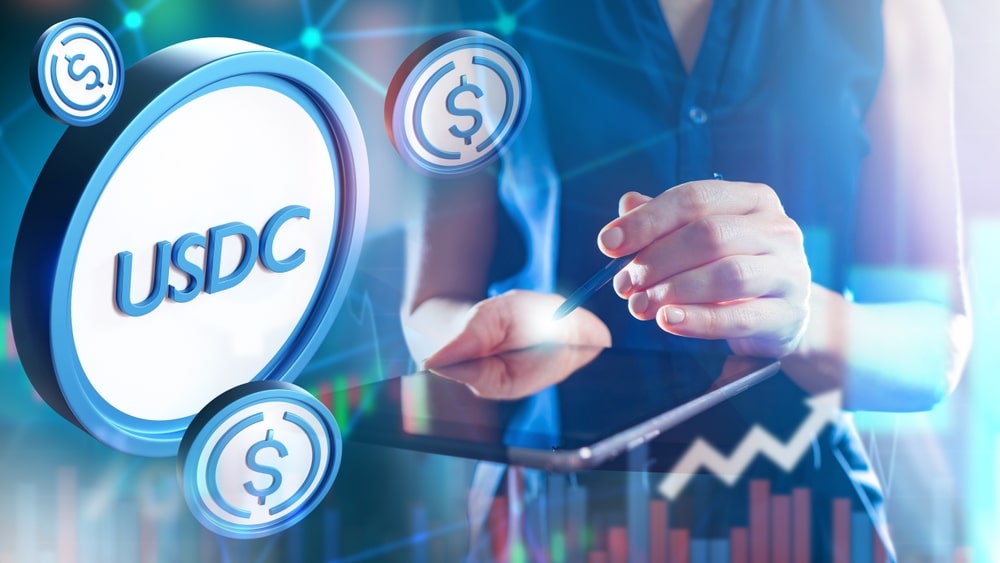The crypto market is expected to be volatile in 2024, but that doesn’t mean you should not explore the nascent space. Stablecoins like USDC are designed to shield conservative investors and traders from volatility. Are you in the United States? Read on to learn how to buy USDC to start your crypto journey.
Is the US Cryptocurrency-Friendly?
There are millions of crypto fans in the United States. But despite this fact, American regulators have yet to adopt policies that protect customers in the crypto market. Nonetheless, there is no ban restricting US citizens from purchasing digital currencies.
📈🤖 Unlock unparalleled trading potential with GPT Stocks Master AI! Revolutionize your portfolio, leveraging real-time insights and predictive analytics. Don’t miss out – step into a world where precision and profitability meet. Ready to transform your trading journey? Click “Master My Trades” now for your exclusive access! ✨🚀📊
Note that the US Internal Revenue Service, the authority responsible for collecting taxes, requires crypto holders to pay capital gains taxes.
Before buying USDC on any exchange in the United States, you must be subjected to Know Your Customer (KYC) checks. In this case, your preferred exchange will ask you to submit proof of residence and an identification document. KYC checks are necessary as they help to curb money laundering.
Why Should I Purchase USDC?
There are several reasons to buy the USDC stablecoin. Firstly, the digital currency is highly regulated, making it reliable. Moreover, its issuer, Circle, adheres to stipulated laws and embraces transparency. Circle periodically publishes proof of reserves to show that every USDC token in circulation is backed by a dollar.
Buying USDC allows you to make fast and cheap transactions. It usually takes a few minutes for a USDC transaction to be completed. Also, holding USDC allows you to explore investment opportunities in the DeFi space.
Step-by-Step Guide to Purchasing USDC Coin in the US
Purchasing USDC in the United States doesn’t get easier than this. Here are the steps to follow:
Step 1: Pick a Crypto Exchange
There are several factors you must take into account when selecting a crypto exchange. Among them is security. Always check if the exchange you plan to register with has sufficient security measures to protect your data and funds.
In addition, check if the trading fees imposed are fair. You want to trade on an exchange that lets you retain most of the profits.
Several well-reviewed crypto exchanges have a presence in the United States. They include Binance, OKX, Bybit, Coinbase, Gemini, and Crypto.com.
Step 2: Register an Exchange Account
After finding the right exchange, it is time to set up an account. In most cases, you will be required to provide an email or a phone number. As mentioned, you must verify your identity to start trading on a regulated exchange.
Step 3: Deposit Funds to Your New Account
Once the exchange verifies your account, you will be given access to various payment methods to fund your account. Most trading platforms support bank transfers, PayPal, Google Pay, Apple, and debit/credit cards.
Step 4: Buy USDC
Every crypto exchange has a “Buy” feature, which allows users to purchase cryptocurrencies. So, locate it and select USDC as the coin you wish to acquire. After that, enter the fiat amount you want to spend on the stablecoin and complete the transaction. Depending on the exchange used, your USDC should arrive in your account instantly or within a few minutes.
Buying USDC on a Peer-to-Peer Platform
Instead of depositing fiat on your exchange account to purchase USDC, you can buy the stablecoin via a Peer-to-Peer (P2P) platform. But how do you go about this? Well, you first have to select a reliable P2P platform in the US. One of them is Paxful. After that, choose a trusted USDC seller and place a buy order. The P2P platform will then send the ordered USDC coins to an escrow, and after payment confirmation by the seller, the coins will be sent to your account.
How to Store Your USDC Safely
After buying USDC, it is crucial to store it in a non-custodial wallet, which gives you total control. Some of the recommended wallets include Ledger, Trezor, Trust Wallet, and Exodus.

